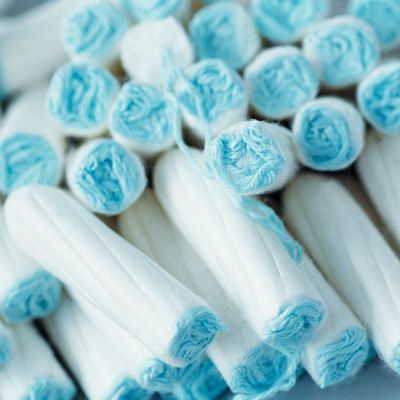
According to Representative Carolyn Maloney (D-NY), the average woman will use over 16,800 tampons and sanitary pads in her lifetime, but we don’t know much about the materials that go into those products — which is why Maloney is reintroducing (for the tenth time!) the Robin Danielson Act, a bill named for a woman who died of Toxic Shock Syndrome (TSS) in 1998. The bill calls for research into feminine-hygiene-product safety.
“Almost no independent research has investigated potential health impacts of long-term feminine hygiene product use, aside from the many studies on TSS,” writes Mary Emily O’Hara, at RH Reality Check:
Part of the problem is that tampons and pads are considered “medical devices,” which means companies test them before submitting the results to the FDA as part of their pre-market approval (PMA) documents. PMAs — including testing results — are not readily available to consumers. Furthermore, the FDA does not require companies to list the ingredients on these products.
Toxic Shock Syndrom (or TSS) — that spectral disease promised to be the fate of any young girl who doesn’t change her tampon frequently enough — is not the only concern here. The concern is, really, the unknown.
“There are many other leachables that come from fibers, and they leach out chemicals whether [the fibers are] organic or inorganic, and [they] clog the liver,” Philip Tierno, a microbiologist at New York University, told O’Hara. “If you have a woman who has no or low antibodies, not only are the leachables being absorbed, but other chemicals that come into play when the liver is clearing toxins.”
So, why has Congresswoman Maloney’s bill been passed up so many times before? Chris Bobel, the president of the Society for Menstrual Cycle Research (and a woman!), suggests that it could be “a result of activist inattention,” or activists pressuring the product manufacturers rather than the overseeing government agencies.
When you use a product often enough, you stop thinking about it — especially if, like a tampon, it’s literally inside of you. But a little transparency seems like it shouldn’t be too much to ask.




